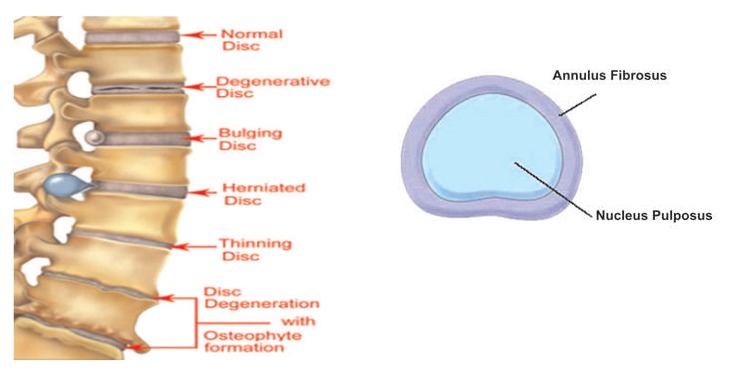Annulus fibrous forms the outer layer and is very strong in nature. On the other hand, the inner portion of the disc is formed by a soft jelly like structure called Nucleus Pulposus. With aging process the discs loose their water content and thus leading to wear and tear of the disc fibers. It is the inner layer i.e. nucleus pulposus that herniates out which is commonly known as Slipped disc.
What is Disc herniation?
Disc herniation means moving out of the disc from its normal position.
What are the Causes of disc herniation?
• Age related degeneration
• Sedentary lifestyle and desk or computer jobs.
• Sudden weight lifting.
• Genetic Predisposition.

